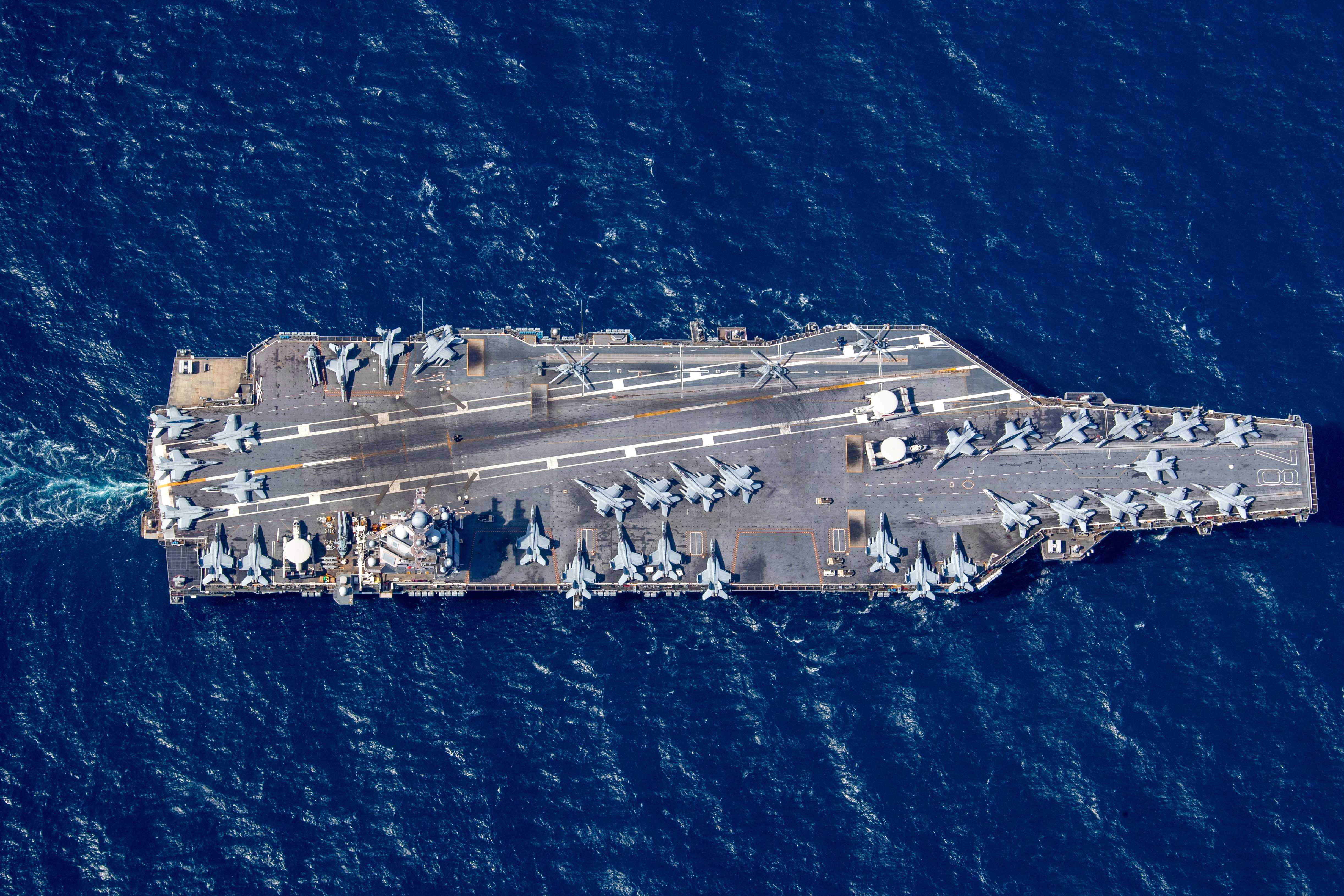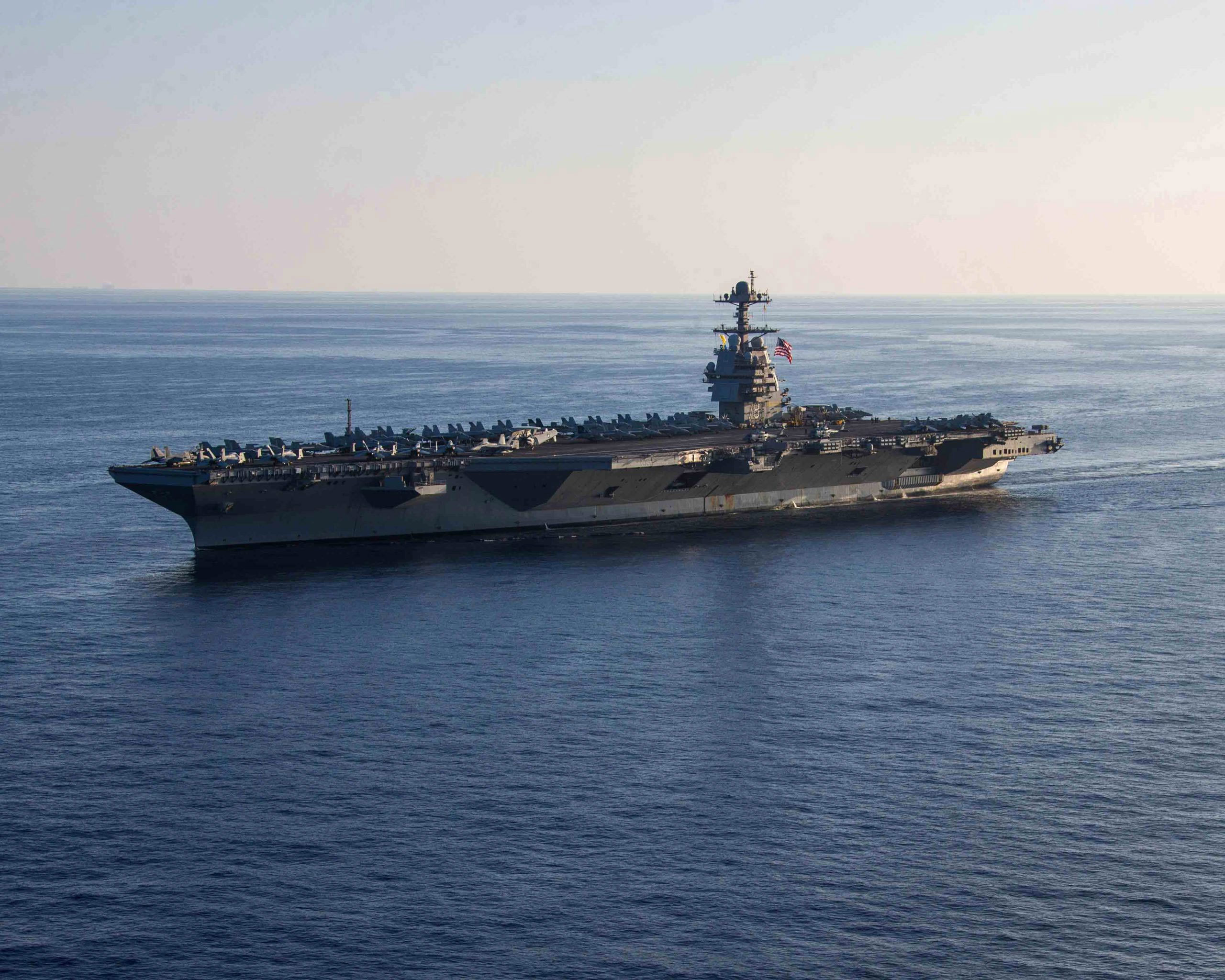The USS Gerald R. Ford, the US Navy's most advanced aircraft carrier, has blazed a blistering, nuclear-powered trail across the Mediterranean in its haste to support Israel.
Two satellite images of the 330-metre-long aircraft carrier have contrasted the wake trailing the vessel yesterday, a long tail of white water carved out from behind, and from normal operations in the Adriatic Sea last week, an almost imperceptible ripple.
"Big girl is MOVING," the military account Funker530 posted on X, formerly Twitter, as it tracked the Ford rapidly steaming toward Israel and Gaza.
READ MORE: Comedian Cal Wilson dies, aged 53

Standing a monster 76 metres tall, and weighing an estimated 100,000 tonnes when fully laden, four giant propellers can power the Ford to a top speed in excess of 30 knots (56km/h).
The Ford and its 5000 sailors and deck of warplanes arrived in the eastern Med this morning, to deter any actor looking to escalate or widen the Israel-Hamas conflict.
Known among US sailors as "the biggest, baddest warship" in the Navy, the Ford was accompanied by the cruiser USS Normandy and guided-missile destroyers USS Thomas Hudner, USS Ramage, USS Carney, and USS Roosevelt.
Two days ago the US ordered the Ford carrier strike group sail to the eastern Med.
"The arrival of these highly capable forces to the region is a strong signal of deterrence should any actor hostile to Israel consider trying to take advantage of this situation," US Central Command head General Michael Kurilla said in a statement today.
READ MORE: How a music festival turned into Israel's worst-ever civilian massacre


The show of force signals the US is ready to respond to anything, from possibly interdicting additional weapons from reaching Hamas and conducting surveillance.
The aircraft carrier USS Dwight D. Eisenhower, which was previously scheduled to deploy from Virginia, may also join the Ford in the Med, Politico reported.
The Ford is the most expensive and largest carrier ever constructed and joined the US Navy fleet in late 2022.
According to a 2009 report, the cost of the nuclear giant was almost $21.7 billion.
